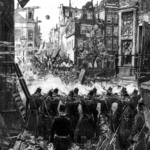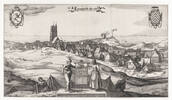Geweld in de polder
DOI:
https://doi.org/10.18352/bmgn-lchr.5969Keywords:
Crime, historiographyAbstract
Violence in the polders
There is a staunch Whig tradition in Dutch historiography coupled with a strong inclination to emphasize moderation and tolerance as key features in Dutch history. The explanation for the relatively low level of violence, however, is rather weak or missing altogether. This article presents a case that links the low level of violence to three positive factors: the Netherlands was situated, geopolitically speaking, in the eye of the storm; there were relatively few cases of famine; and, it had no iron and coal basins that could easily be exploited. Violence, therefore, tended to manifest itself in the form of strict social control: specifically developed through the process of keeping tight control of religious differences, which culminated in the system of pillarization in the nineteenth century and continued as a means of suppressing the class war. This throws some light on one specific aspect of modern Dutch history, namely that far from being weak (as maintained in the Whig tradition), the state and societal organizations strengthened each other, as a result of which they were able to dispel all manner of unrest and discontent.
Downloads

Downloads
Published
How to Cite
Issue
Section
License
Authors who publish with this journal agree to the following terms:
a) Authors retain copyright and grant the journal right of first publication with the work simultaneously licensed under a Creative Commons Attribution 4.0 International (CC BY 4.0) that allows others to share the work with an acknowledgement of the work's authorship and initial publication in this journal.
b) Authors are able to enter into separate, additional contractual arrangements for the non-exclusive distribution of the journal's published version of the work (e.g., post it to an institutional repository or publish it in a book), with an acknowledgement of its initial publication in this journal.
c) Authors are permitted to post their work online (e.g., in institutional repositories or on their website) prior to and during the submission process.
Authors are explicitly encouraged to deposit their published article in their institutional repository.










